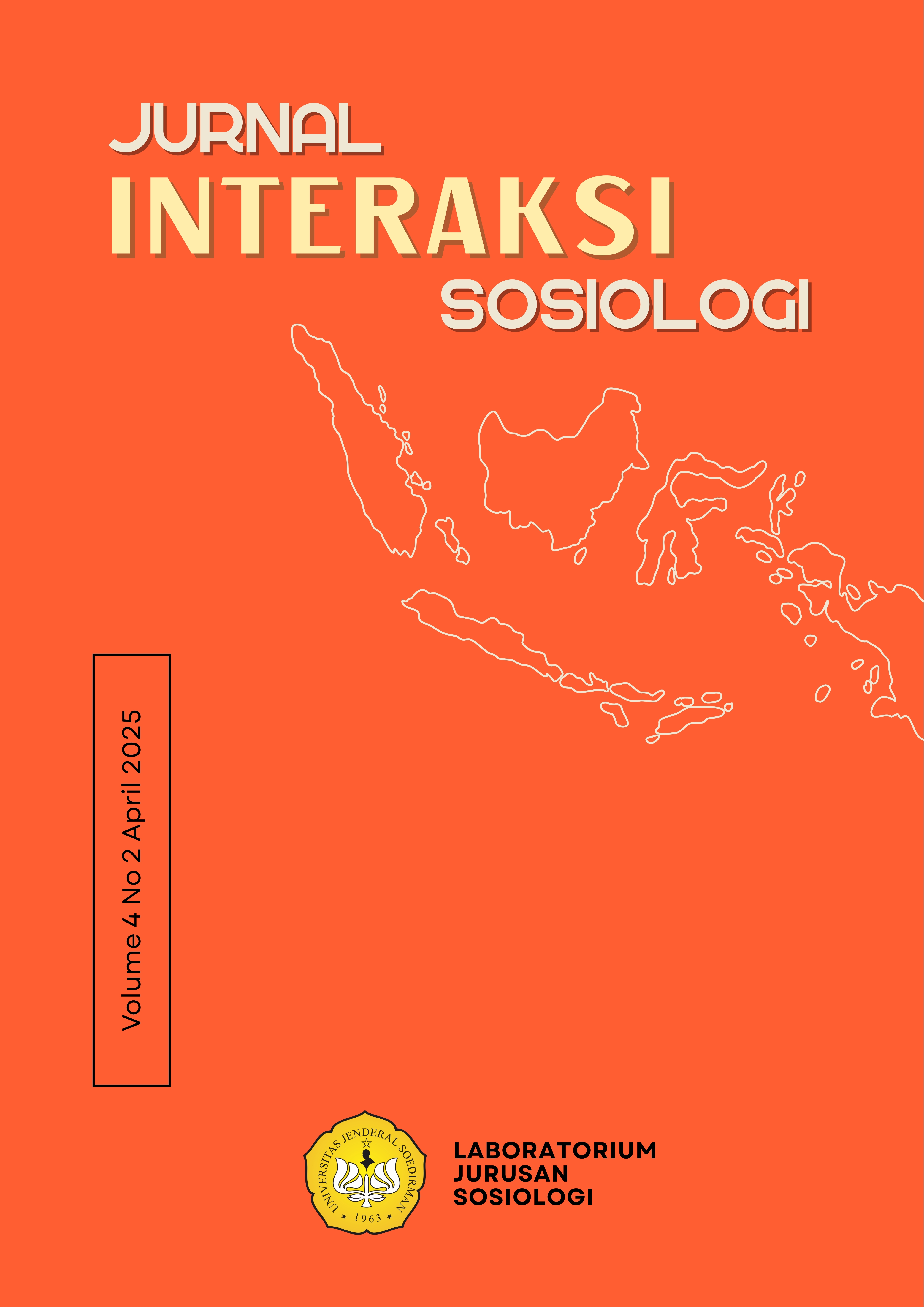Konstruksi Sosial Remaja Perempuan tentang Kelompok Lelaki Melambai
Abstract
Waving men, who are often underestimated for their behavior that is perceived as not conforming to traditional norms of masculinity, both in dress and manner of interaction, are now increasingly seen in social settings. This phenomenon reflects a shift in the way masculinity is perceived, where softer and less stereotypical expressions are beginning to be accepted by some, especially among adolescent girls. This study aims to analyze adolescent girls' views on the waving men group as well as the reasons behind their comfort in befriending these individuals. Using a qualitative phenomenological approach, data was obtained through in-depth interviews with several female teenagers with an age range of 17-19 years. The results showed that the objective reality that emerged was a change in acceptance of gender expressions that did not conform to conventional masculinity norms. Meanwhile, in subjective reality, adolescent girls who are the subjects of this study have different experiences and views of waving men, which are influenced by social interactions and their understanding of gender differences. Also, adolescent girls' acceptance of the waving men group occurs through a social construction process consisting of three stages. First, externalization, where social interactions portray waving men as friendly and caring individuals. Second, objectivation, which is seen from the recognition of characteristics such as empathy and emotional sensitivity after direct interaction with them. Third, internalization, in the form of acceptance of a more flexible concept of gender, so that the waving men group is seen as supportive and fun friends. This research confirms the important role of the social environment in shaping adolescent girls' gender perceptions, as well as providing new insights regarding the acceptance of gender diversity in society.
Keywords : Waving Men Group, Gender, Social Construction
References
Ayuningrum, N. G. (2021). Analisis Wacana Kritis Komentar Seksual dalam Media Sosial Twitter Laki-Laki Berekspresi Gender Feminin. Jurnal Wanita dan Keluarga, 2(2), 117–126. https://doi.org/10.22146/jwk.3620
Fadly WIjayakusuma, P. K. (2021). Less Masculine, More Feminine dan Less Feminine, More Masculine: Laki-laki Mengekspresikan Androgini Melalui Fashion. Emik, 3(2), 137–159. https://doi.org/10.46918/emik.v3i2.662
Febrianti Pohan, D., Fatra Deni P, I., & Rasyid, A. (2022). PERSEPSI MAHASISWA PERBANKAN SYARI’AH UIN SUMATERA UTARA DALAM CONTENT CREATOR METROSEKSUAL DI TIKTOK. SIBATIK JOURNAL: Jurnal Ilmiah Bidang Sosial, Ekonomi, Budaya, Teknologi, dan Pendidikan, 1(11), 2665–2676. https://doi.org/10.54443/sibatik.v1i11.412
Octaviani, C. N., Prihantoro, E., Sariyati, & Banowo, E. (2022). GERAKAN FEMINISME MELAWAN BUDAYA PATRIARKI DI INDONESIA. BroadComm, 4(1), 23–35. https://doi.org/10.53856/bcomm.v4i1.232
Putri, Z., Nurunnisaa, E., Firman, V. D., Putri, J. N. I., Fattah, S. R. A., & Rusdi, A. (2021). MENGATASI PROBLEMATIKA PENURUNAN KUALITAS AQIDAH DAN AKHLAK PADA REMAJA: WEBINAR ISLAMIC WISDOM DALAM PENCARIAN JATI DIRI PADA REMAJA. 4(1).
Searle, J. R. (1997). The Construction of Social Reality. Free Press.
Shofi, M. A. (2022). Widow Stigma: A Critical Study of the Discrimination of Widow in Public (Islamic Perspective and Gender). Al-Maiyyah: Media Transformasi Gender dalam Paradigma Sosial Keagamaan, 15(1), 30–45. https://doi.org/10.35905/al-maiyyah.v15i1.767
Wita, G. (2022). FENOMENOLOGI DALAM KAJIAN SOSIAL SEBUAH STUDI TENTANG KONSTRUKSI MAKNA. 06(2).
Wiyono, T., & Muhid, A. (2020). Self-disclosure melalui media instagram: Dakwah bi al-nafsi melalui keterbukaan diri remaja. Jurnal Ilmu Dakwah, 40(2), 141. https://doi.org/10.21580/jid.v40.2.5834






1.png)

